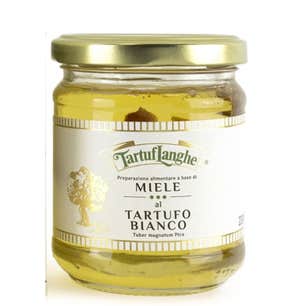Honey

Add a sweet touch to your breakfat or a tasty note to your glazed meat with our Honey selection. The Italian honey selection is rich and gives you the opportunity to experience a true Italian lifestyle.

Add a sweet touch to your breakfat or a tasty note to your glazed meat with our Honey selection. The Italian honey selection is rich and gives you the opportunity to experience a true Italian lifestyle.
Like fine wine, Italian honey has centuries of tradition behind it. There are more than 300 types of honey in Italy, with different colors and flavors depending on the plants from which the bees draw nectar. Longinio & Cardenal has chosen as its main partner Mieli Thun, a company from Trentino Alto Adige that selects the best places around Italy where bees can live in peace. You can discover different varieties of honey, shop your favorite one and receive your order directly at your home in Hong Kong.
Each place produces honeys with specific characteristics according to the area of production; honey is a photograph of those forests, those mountains and those soils. Although it is produced by bees, honey is a plant product, the most precious fruit of plants expressing the intense fragrance of the flower.
No processing is necessary to consume and preserve honey; it is consumed raw, without added ingredients, in its simplicity. The presence of bees means the health of an environment; bees are by their nature the link between the human and insect worlds. Honey is sweet because it has all the sugars of the fruit. The sweetness of honey expresses aromas, scents, textures, colors and nuances that go well with modern cooking.
Beekeeping is one of the very rare human activities through which we eat or use the products of an animal but do not eat it. Humans develop a helpful relationship with bees; they defend them against aggression, disease, shelter them from the cold, move them to abundant blooms, and they return with lots of honey, pollen, wax, royal jelly, and pollination.
The most popular is millefiori honey, but there are also numerous varieties of monofloral honey. Among the most widely used in Italian cooking is acacia honey, which has a delicate flavor and is the most suitable if you do not want to cover other flavors. Lime honey, which is very sweet and aromatic, is good for desserts.
Chestnut honey and strawberry tree honey, on the other hand, are rather bitter and go well with main meat dishes, charcuterie boards, and cheeses. Whether you like classic millefiori, acacia, chestnut, eucalyptus, linden or honeydew, it doesn't matter, Italy is rich in quality honey with special characteristics.
Pure honey can be used for multiple purposes. From breakfast to dinner, to pastry, honey is a condiment for salads, perfect in cooking, essential in cocktails, important in the mixture of salami in the Italian tradition.
Honey is used for vinaigrettes, marinades, dressings, sauces, giving sweet, aromatic notes and floral and balsamic nuances. In addition, it is aromatic refreshment for sourdough. Choosing the most suitable honey to nourish the bread's natural leavening agents can result in interesting modifications; fragrant notes, hints of toasted nuts and floral freshness are enhanced. Trying to revolutionize baking, leavening, and pastry is not an easy job, but by introducing honey you can discover the benefits of this natural sweetener.
The pairing with cheese is now common practice, honey should be respected and served alongside, the role of both is to set the taste and break the monotony on the palate. The logic of pairing involves the delicacy of one and the strength of the other food. The texture is very important; creamy honeys go well with hard cheeses while liquids are pleasant with fatty, creamy cheeses.

